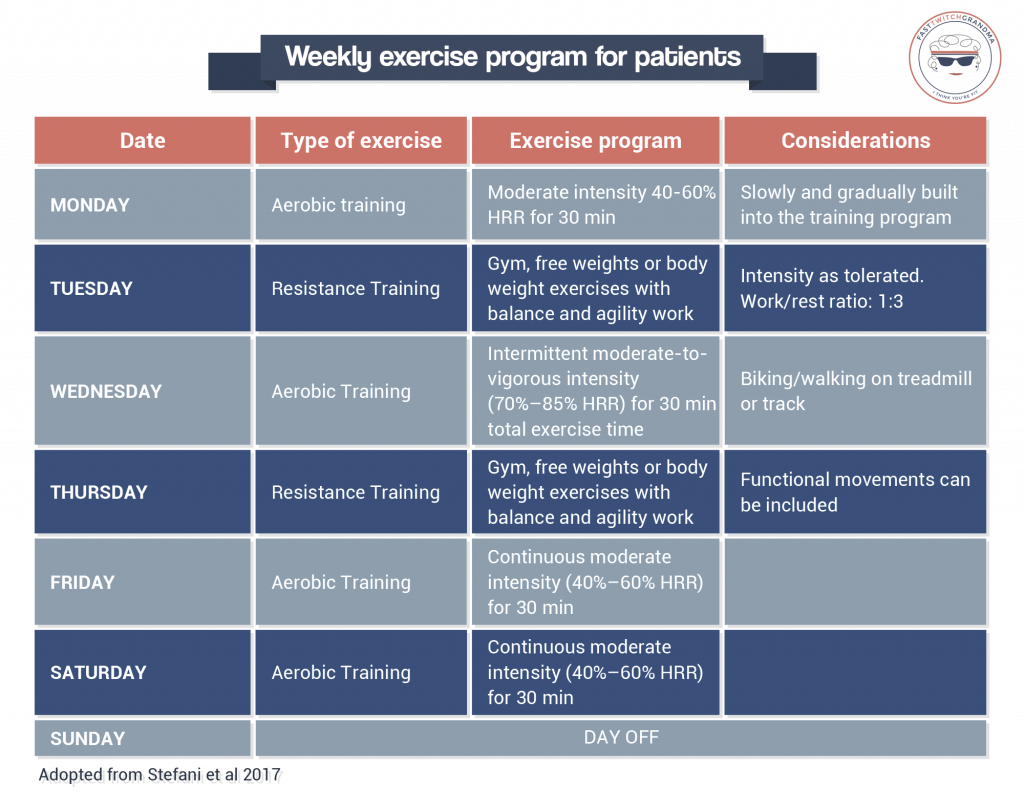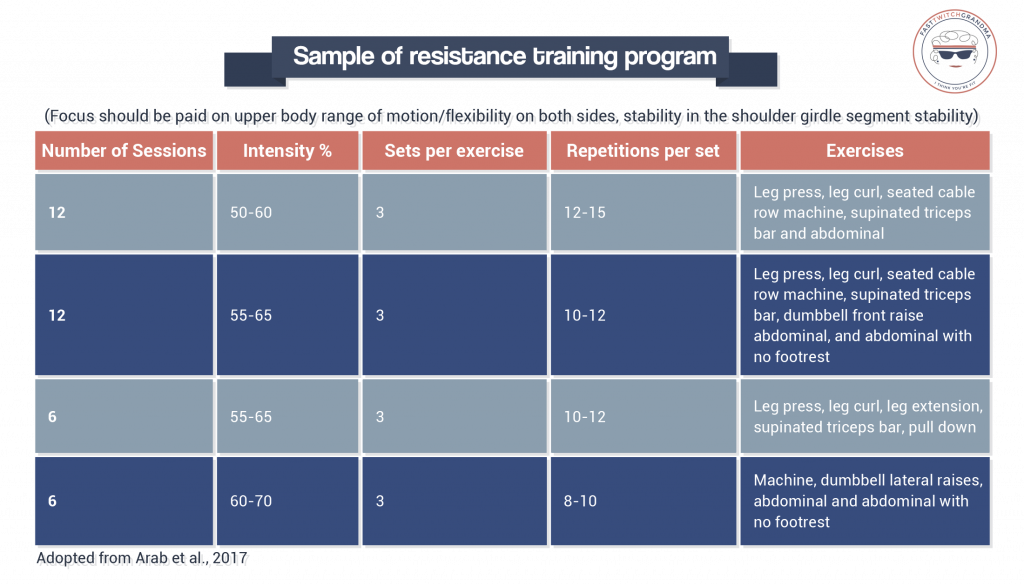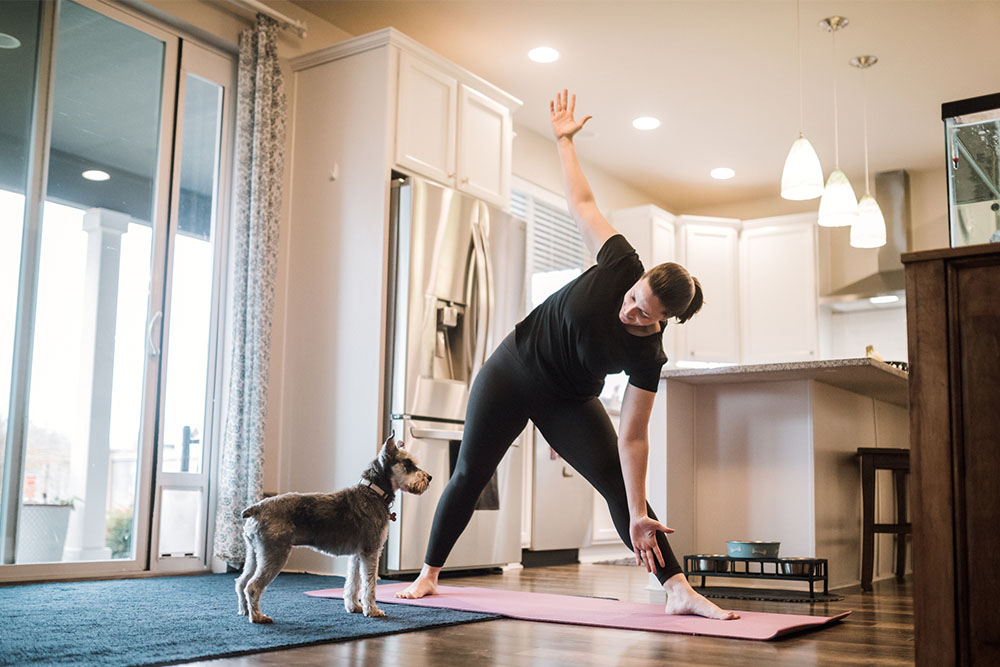Exercise Training Plan For Patients With Breast Cancer

Moji Kaviani, Ph.D., CEP
 Prevalence of breast cancer is alarmingly increasing in women across the world which is the leading cause of cancer death in this population. Despite using the advanced methods of treatments (e.g. chemotherapy and radiation), these treatments could adversely affect cardiovascular, metabolic, musculoskeletal, and well-being of patients (Fairman et al., 2016)
Prevalence of breast cancer is alarmingly increasing in women across the world which is the leading cause of cancer death in this population. Despite using the advanced methods of treatments (e.g. chemotherapy and radiation), these treatments could adversely affect cardiovascular, metabolic, musculoskeletal, and well-being of patients (Fairman et al., 2016)
Results of numerous studies have indicated that patients with breast cancer can benefit from regular exercise during and following treatment to improve their physiological/psychological as well as overall quality of life. In addition, exercise training can help to increase muscle strength and confidence and improve mood, depression and anxiety. There are also research studies demonstrating that regular exercise can positively influence some of the physical side effects of breast cancer treatment, such as fatigue, pain, lymphoedema and lowered bone density (Larsson et al, 2008; Volaklis et al., 2013).
Exercise training has been shown to lower reoccurrence of breast cancer by approximately 24 percent in a research involving more than 12,000 women. In this research, some women expressed that they consider exercise as part of their treatment so that they could cease taking medications.
Related Article: How Fruits & Veggies Counteract Chronic Disease
When to begin exercising?
Begin exercising any time during or after treatment for breast cancer. The sooner the better; however, it is never too late. When designing exercise training program, it is crucial to include those types of exercises that patients are able complete. Regardless of their past training experiences, they still need to gradually It’s important to start exercising slowly, and gradually build up to the recommended level of exercise. This is important even if you have exercised regularly in the past (Kraschnewsk et al 2017).
Related Article: Dancing Can Reverse Aging In The Brain
Volume of exercise
Research suggests that any amount of exercise is better than none, and more exercise is generally better than less. It is recommended that women diagnosed with breast cancer meet the minimum requirement guideline (i.e.150 min of moderate to vigorous of physical activity). If able, patients can double the volume of exercise (i.e. 300 min) to gain additional health benefits.
Intensity of exercise
‘Moderate intensity exercise’ refers to exercise that makes breathing a bit harder, but you can still talk. Brisk walking is a good example. When using free weights, Moderate intensity refers to at least 8–12 repetitions of a given exercise (e.g. dumbbell front raise)
Here are some types exercises that can be included:
• walking or jogging
• swimming or water aerobics
• dancing, e.g. salsa, belly dancing
• golf
• cycling
• gym classes, such as aerobics or step classes
• gardening or yard work
• yoga
• Pilates
• resistance training/ gym and home-based exercise
Related Article: Become A Runner At Any Age
Medical considerations
In case of noticing any sign of lymphoedema (is a condition of localized fluid retention and tissue swelling), exercising should be immediately stopped to seek medical help. Some of early warning signs of lymphoedema are listed here:
• swelling of the arm, breast or hand
• feelings of discomfort, heaviness or fullness in the arm, hand or breast
• aching, pain, or tension in the arm, shoulder, hand, chest or breast area
Weekly exercise program for patients

*HRR= heart rate maximum (HRmax) – heart rate rest (HRrest)
Intensity and duration are individualized based on medical history, treatment and training experience.
Sample of resistance training program
(Focus should be paid on upper body range of motion/flexibility on both sides, stability in the shoulder girdle segment stability).

Evidence is convincingly growing that regular exercise training is reliable approach to breast cancer prevention and treatment (Borch et al., 2015). The findings of some review articles demonstrate that exercise is a safe, feasible intervention that significantly improve metabolic, physiological, and overall fitness in breast cancer patients at any stage of treatment or following treatment (Zhu et al., 2016).
Related Article: Think Positive Thoughts For A Better Workout
You Might Like:
How Overtraining and Undertraining Impacts Hormonal Health
While maintaining a healthy hormonal balance is essential for overall health and wellbeing, it is an often-overlooked component of women’s health. Hormones play a vital role in regulating various bodily functions, including metabolism, energy, mood,...Upper Body Strength in Post-Menopausal Women
Menopause is a unique time in the human life, and with it comes a myriad of changes that can have wide reaching health implications. However, over the last 20 years we have seen a strong...Does Testosterone Boost Athletic Performance in Female Athletes?
Testosterone is one of the most talked about hormones in the human body – especially when it comes to masculinity and athletic performance. But what many people fail to realize is that despite testosterone being...Protocol for Breast Injuries in Female Athletes
The popularity of female sport has been increased at an incredible pace over the last decade. As a result, we have seen increases in funding, the uptake of better-quality coaches, and the introduction of high-level...Are ACL tears more common during a women’s menstrual cycle?
If you are an athlete or weekend warrior who has gone down with an injury, it is the arguably worst thing you can hear. Those three dreaded syllables. ACL. Yep, the good old anterior cruciate...How Does the Menstrual Cycle Impact Physical Performance?
Hunter Bennett There is a myriad of factors that affect physical performance capabilities. Things such as training status, emotional state, and of course both current fatigue and recovery status, are some of those that are...References
Fairman CM, Focht BC, Lucas AR, Lustberg MB. Effects of exercise interventions during different treatments in breast cancer. J Community Support Oncol. 2016; 14(5): 200-209
Larsson IL, Jönsson C, Olsson AC, Gard G, Johansson K. Women’s experience of physical activity Following breast cancer treatment. Scand J Caring Sci. 2008; 22(3): 422-29.
Volaklis KA, Halle M, Tokmakidis SP. Exercise in the prevention and rehabilitation of breast cancer. Wien Klin Wochenschr. 2013; 125(11-12): 297-301.
Borch KB, Braaten T, Lund E, Weiderpass E. Physical activity before and after breast cancer diagnosis and survival—the Norwegian women and cancer cohort study. BMC Cancer. 2015;15:967
Zhu G, Zhang X, Wang Y, et al. Effects of exercise intervention in breast cancer survivors: a meta-analysis of 33 randomized controlled trails. Onco Targets Ther. 2016;9:2153–68
Stefani et al. Clinical Implementation of Exercise Guidelines for Cancer Patients: J. Funct. Morphol. Kinesiol. 2017, 2, 4; doi:10.3390/jfmk2010004
Kraschnewsk et al. Exercise in the Prevention and Treatment of Breast Cancer: What Clinicians Need to
Tell Their Patients.Sports Med. Rep. 2017; 16(4): 263–267















